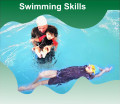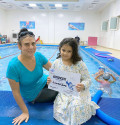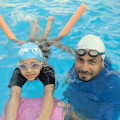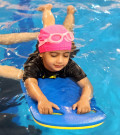
Drawing Activities for Kids to Learn Something new
2024-04-06 - drawingIntroduction
Engaging in drawing activities is not only fun for kids but
also plays a crucial role in their overall development. From enhancing fine
motor skills to fostering creativity, drawing offers numerous benefits for
children. In this article, we'll explore various drawing activities that can
help kids learn creative steps and express themselves through art.
Importance of Drawing for Kids
Drawing is more than just putting pen to paper; it's a
fundamental form of expression for children. Here are some reasons why drawing
is essential for kids:
Benefits of Drawing
Drawing allows children to express their thoughts, feelings,
and imagination visually. It helps them develop hand-eye coordination, refine
motor skills, and boost cognitive development.
Development of Fine Motor Skills
Engaging in drawing activities, such as holding a pencil or
crayon and making controlled movements, helps children refine their fine motor
skills, which are essential for tasks like writing and tying shoelaces.
Stimulating Creativity
Drawing encourages children to think outside the box and
explore their creativity. It allows them to experiment with colors, shapes, and
textures, fostering innovation and originality.
Basic Drawing Activities
To introduce kids to the world of drawing, start with simple
activities that allow them to explore and experiment:
Scribbling and Doodling
Encourage young children to scribble and doodle freely on
paper. This helps them get comfortable with holding drawing tools and making
marks on the page.
Tracing Shapes
Provide templates or stencils of basic shapes, such as
circles, squares, and triangles, for children to trace. This activity helps
them practice hand-eye coordination and shape recognition.
Free Drawing
Give children the freedom to draw whatever they like without
any guidelines or restrictions. This allows them to express themselves freely
and develop their unique artistic style.
Learning Shapes and Colors
Drawing is an excellent way for kids to learn about shapes,
colors, and spatial awareness:
Drawing Basic Shapes
Encourage children to draw simple shapes like circles,
squares, and triangles. This helps them understand geometric concepts and
develop their drawing skills.
Color Recognition through Drawing
Ask children to use different colors to fill in shapes or
draw objects. This not only teaches them about colors but also enhances their
creativity and imagination.
Exploring Different Drawing Tools
Provide a variety of drawing materials for children to experiment
with:
Crayons
Crayons are a staple drawing tool for kids. They come in
various colors and are easy to grip, making them ideal for young children
learning to draw.
Colored Pencils
Colored pencils offer more precision and control compared to
crayons. They are perfect for detailed drawings and shading techniques.
Markers
Markers come in vibrant colors and bold lines, making them
suitable for bold and colorful artwork. They are also great for large-scale
drawings and poster-making.
Guided Drawing Sessions
Guide children through drawing exercises that help them
build confidence and learn new techniques:
Drawing Simple Objects
Start with simple objects like fruits, animals, or household
items. Break down the drawing process into easy-to-follow steps, allowing
children to practice basic shapes and proportions.
Following Step-by-Step Instructions
Provide step-by-step instructions or tutorials for drawing
specific objects or characters. This helps children learn observation skills
and follow directions effectively.
Incorporating Nature
Encourage children to draw inspiration from the world around
them:
Drawing Plants and Animals
Take kids on nature walks and encourage them to observe
plants, flowers, and animals. Then, invite them to draw what they saw, focusing
on details and textures.







.jpg)











































































































































































































